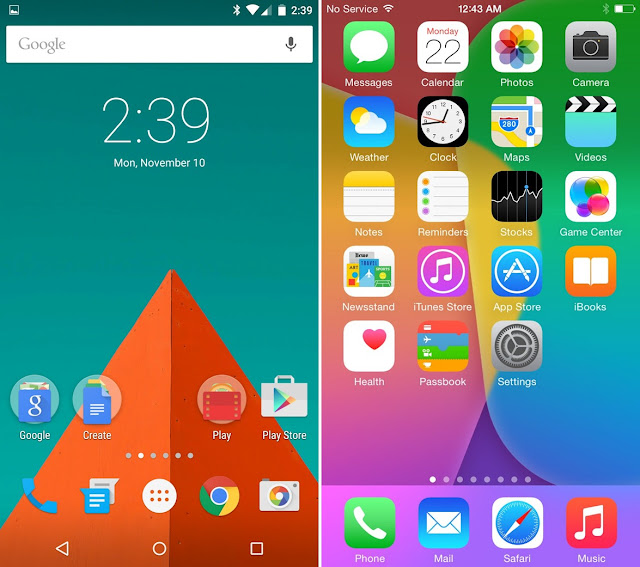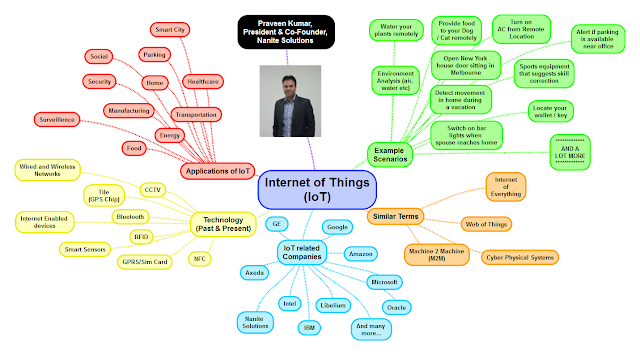Android and iOS Performance Best Practices
The success of any mobile app actually depends on the kind of
experience that it provides to users. However, the performance also plays a
very important role in its success. Find out about some of the top parameters
that can affect the performance of mobile apps. When you create a mobile app
and deploy it, you need to consider these parameters and use the best practices
for its improvement.
UI/UX
Design
A compelling design for an app is often decided based on its
architecture and UI/UX. Both Android and iOS technologies have laid down some
particular guidelines when it comes to User Interface designing and layout
optimizing. These guidelines have a lot of importance in the search, effective
navigation and notifications.
Proper
Coding methods
It is important follow proper coding techniques. As an owner or
developer, you have to make your apps responsive without a lot of user
blocking. Make use of asynchronous calls for database and network access for
quicker launch of the app. You should also concentrate on identity management,
app vulnerability and network security while determining permissions usage and
security. Lower the consumption of power by maximizing the use of various
features including the disk, location, Wi-Fi network and CPU. Use time-tested
methods to reduce memory footprint and manage data flow design, caching and app
memory.
Device
Variety
Various device models and specs can be found today, and the
differences in battery, CPU, OS and performance of individual device has a big
impact on the performance of Android and iOS performance. It is more prominent
for Android apps and the following tips can ensure better device coverage –
·
Creating varied layouts which match varied
densities and sizes
·
Use of string resources that come with support
for various languages
·
Use of existing best practices for data
transfer without a drain on the battery, scheduling and accomplishing downloads
with prefetching, caching and polling.
·
Assigning target and minimum API levels and
use of themes and styles specific to platforms and verifying versions of
systems.
·
Use of powerful downloading methods and
preventing excess downloads, which can also boost the performance.
It is important to leverage effective third party tools or tools
in the IDE, for the detection and resolution of memory management problems,
monitoring and reporting crashes, effective codes etc. It can also include
performance tuning tools. A few tools that are used widely in this domain
include ddtracedump for Android, xCode for Traceview and iOS, and Crittercism
for monitoring crashes.
APIs for Proper
Integration
Proper API design makes sure that data can be accessed by mobile
apps much quicker, and App performance can be improved. It is better to make
use of open source libraries that are supported widely, and standard plugins
and APIs wherever they are to be found.
Network
Connectivity
When it comes to app design, connectivity is another important
factor that needs to be taken into account. The status of the connection,
bandwidth and latency should be considered. Connectivity can differ in terms of
latency availability and capacity. Naturally, apps need to allow a change in
network while an app is in use.
TCP and
HTTP best practices
The app should also be designed keeping in consideration the best
practices regarding the usage of TCP and HTTP connections. It is important to
lower the network connections and sending proper data over the network with
minimal traffic hops.
Right
Testing Strategies
It is important to test the performance of a mobile app before
deploying it. You have to consider various tasks –
·
Make sure that the coverage is tested to be
excellent on different OS versions and various mobile devices.
·
With privacy being important, you have to be
serious about the security
·
Conduct tests for performance for changes in
size, images and network
·
Interface and usability testing, with special
focus on online and offline zones, if possible
·
Focus on Load or Stress testing in case large
images and complicated operational procedures are used by the App
·
Conduct Comparison Testing, by pitting your
app with rivals and checking superiority in performance and features
Use of
large files and images
In many cases, the files and images used in apps can be large in
sized. Use different best practices for regulating the image resolution for
faster loading. You should also look at the network traffic and image caching
for downloading of images. With the existing best practices, you can show a
bitmap image in Android OS with reference to Android – whether in terms of
bitmap memory management, processing, caching or loading. Best practices should
also be used for Video Streaming with proper methods in Android as well as iOS
operating systems.
Think about the features of the performance and latency of the 3rd
party services, and spot the best set for satisfying the requirements. Mobile
app dependencies consist of SDKs and tools from third party modules and
platform vendors such as ADT+Android SDK, Android Studio or Xcode+iOS SDK. You
should keep such dependencies completely updated in order to get maximum
benefits of stability enhancements and bug fixes.
User
Experience and Page Loading
With an unresponsive, sluggish UI, you are sure to lose many
users. Studies have proven that mobile device users demand more speed, given
the fact that they are often in a hurry and look for information while on the
move. You can reduce loading and waiting time when you optimize UI elements,
individual screens and flows.
·
You should offer a fully professional touch to
your app, whether it comes to aesthetics or appearance.
·
Provide users with a perception of the
performance of your app through the optimization of specific user interface
elements and introduction of progress indicators
It is also important to consider the expectations of end-users
when you are in the stage of developing or designing the app. It is best to
compare the app with those from competitors in the similar segment and finding
out whether your app performs better or lesser than them.






Comments